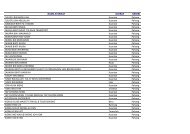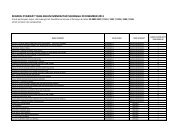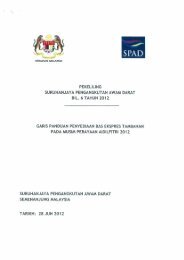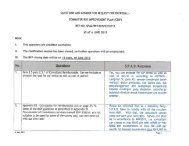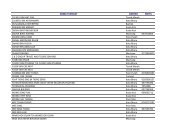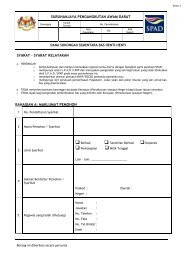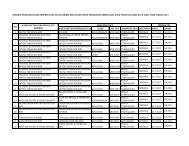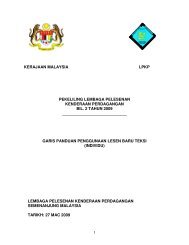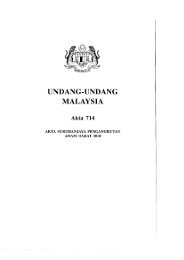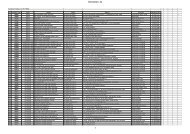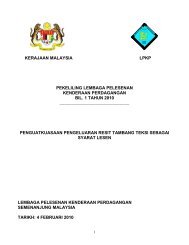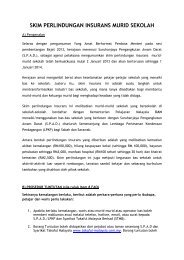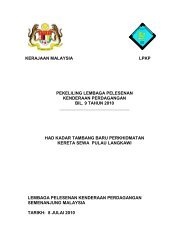Contents - SPAD
Contents - SPAD
Contents - SPAD
Create successful ePaper yourself
Turn your PDF publications into a flip-book with our unique Google optimized e-Paper software.
Table 5.1: Key LPT Policies and Objectives<br />
Objectives for LPT used as basis for evaluating<br />
strategy and project proposals<br />
Key Transport Priorities<br />
Increase<br />
Economic<br />
Competitiveness<br />
and Growth<br />
Health, Safety<br />
and Security<br />
Improve LPT<br />
Access,<br />
Connectivity<br />
and Integration<br />
Efficiency and<br />
Affordability<br />
Equality of<br />
Opportunity<br />
Environment<br />
• Access to Jobs<br />
• Access to International<br />
Links and key employment<br />
centres<br />
• Reduced and reliable<br />
Journey times<br />
• LPT network capacity<br />
• Personal Security<br />
• Reduce Road Accidents<br />
• Encourage healthy<br />
lifestyles<br />
• Access to LPT network<br />
• Access to facilities<br />
• Interchange<br />
• Quality of Journey<br />
• Integration with Land Use<br />
• Reliability<br />
• Encourage Modal Shift to<br />
LPT<br />
• Costs, value for money and<br />
fundability<br />
• Feasibility studies<br />
• Deliverability<br />
• Access for all<br />
• Affordable pricing<br />
• Impact on local<br />
environment<br />
• Air Quality<br />
• Impact on Climate Change<br />
• Network Design (particularly<br />
where related to economic<br />
destinations – Central KL, etc)<br />
• Network Performance<br />
(reliability, etc)<br />
• Fares (Both to fund services and<br />
be affordable)<br />
•Ticketing policy and systems<br />
• Quality Standards (of vehicles,<br />
passenger facilities, driving,<br />
customer care)<br />
• Modal shift from vulnerable road<br />
users and to lower car use<br />
• Network design (across KL and<br />
including integration)<br />
• Network Performance<br />
• “Seamlessness” of interchange<br />
•Accessibility of key centres<br />
• Design of efficient network<br />
• „Procurement‟ driving efficient<br />
cost base<br />
• Performance Management to<br />
maximise value<br />
• For users – fare levels and<br />
structure<br />
• For government – fare levels and<br />
network design<br />
•For operators – ability to predict<br />
revenue and costs accurately<br />
• Network design (related to<br />
socially necessary services – may<br />
be loss making)<br />
• Network performance –<br />
reliability<br />
• Fares (both to fund services and<br />
be affordable<br />
• Quality Standards (low<br />
emissions, driving, etc)<br />
• Network design (modal shift<br />
reducing car use)<br />
The output associated with the table demonstrate that in order to move the industry forward<br />
network design must be coupled with effective integrated network planning and fares structures.<br />
The regulatory, and as appropriate, contracting regime must provide a measure of reliability and<br />
stability such that all partners can have reasonable certainty in terms of what is expected of them<br />
in terms of service delivery. Most importantly passengers and potential passengers must be able to<br />
recognise a stable network of services provision across all modes and be provided with reliable<br />
comprehensive passenger information to plan travel and provide assurances during the course of a<br />
LPT journey. Equally operators, notably bus operators, must have certainty as to the role of their<br />
services in the wider integrated provision and have confidence that the exacting standards<br />
Page 75



